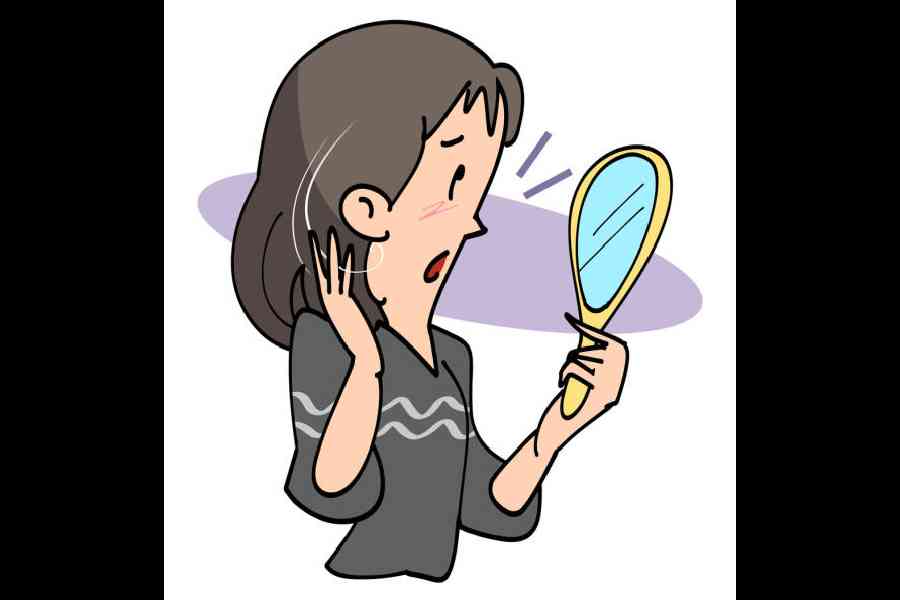Ageing is inevitable, but when hair begins to thin or turn grey in your 20s or 30s, it can create an impression of premature ageing. In a world that prizes youth and vitality — often even in careers and promotions — it is no surprise that products claiming to thicken hair, prevent baldness or delay greying have become a booming industry.
Hair strands arise from follicles that are found all over the body but are most abundant on the scalp. Each strand grows at an average rate of about 0.35mm per day, or roughly 15cm per year. This varies from person to person; genetics, ethnicity and hair type play a role.
As age advances, the rate of all cell division slows, and so does hair growth. Hormones also have an impact. Oestrogens prolong the growth phase while androgens can slow growth and shrink follicles, leading to shorter hair, thinning and baldness. This explains why young women with PCOS (polycystic ovarian syndrome) often complain of scanty hair while men may go bald at a young age. Adequate thyroid hormone is necessary for healthy hair; hypothyroidism results in short, brittle and sparse hair. One of the early signs of uncontrolled diabetes can be sudden, alarming hair loss. Stress hormones, such as cortisol, also interfere with follicle function, impairing growth and hair quality. Sudden stress really can cause hair loss.
Nutrition plays a vital role in hair health. Iron, zinc, vitamins A, D and B, calcium, magnesium and selenium all play a role in optimal growth. Most people obtain these through a balanced diet. Supplementation is rarely necessary unless the diet is calorie or nutrient-restricted.
Each strand of hair’s colour comes from melanocytes, cells at the base of the hair follicle that produce melanin. Over time, these cells die and do not regenerate. The new hair that grows out is colourless, appearing silver or white in reflected light.
Don’t like the grey? You can colour your hair professionally or at home. Choose the shade carefully, wash your hair three days prior and always perform a sensitivity test. Ammonia-free products are preferable. Apply petroleum jelly to the hairline and ears for protection, and use a colour-protect shampoo after dyeing.
Beards and moustaches can also be dyed; the skin and hair in these areas differ from scalp hair so specific “man” products should be used. Alternatively, natural colouring can be used on the head and face by mixing henna and indigo powder to create shades of red, brown or black.
Concerned about male-pattern baldness? Under medical supervision, topical applications of minoxidil lotion can slow hair loss and stimulate growth. Finasteride tablets are also effective when started sufficiently early. Both need to be used daily, as discontinuing treatment can cause the hair to fall off again. For a long-term solution, hair transplantation is a viable option.
The writer has a family practice at Vellore and is the author of Staying Healthy in Modern India. If you have any question on health issues please write to yourhealthgm@yahoo.co.in










